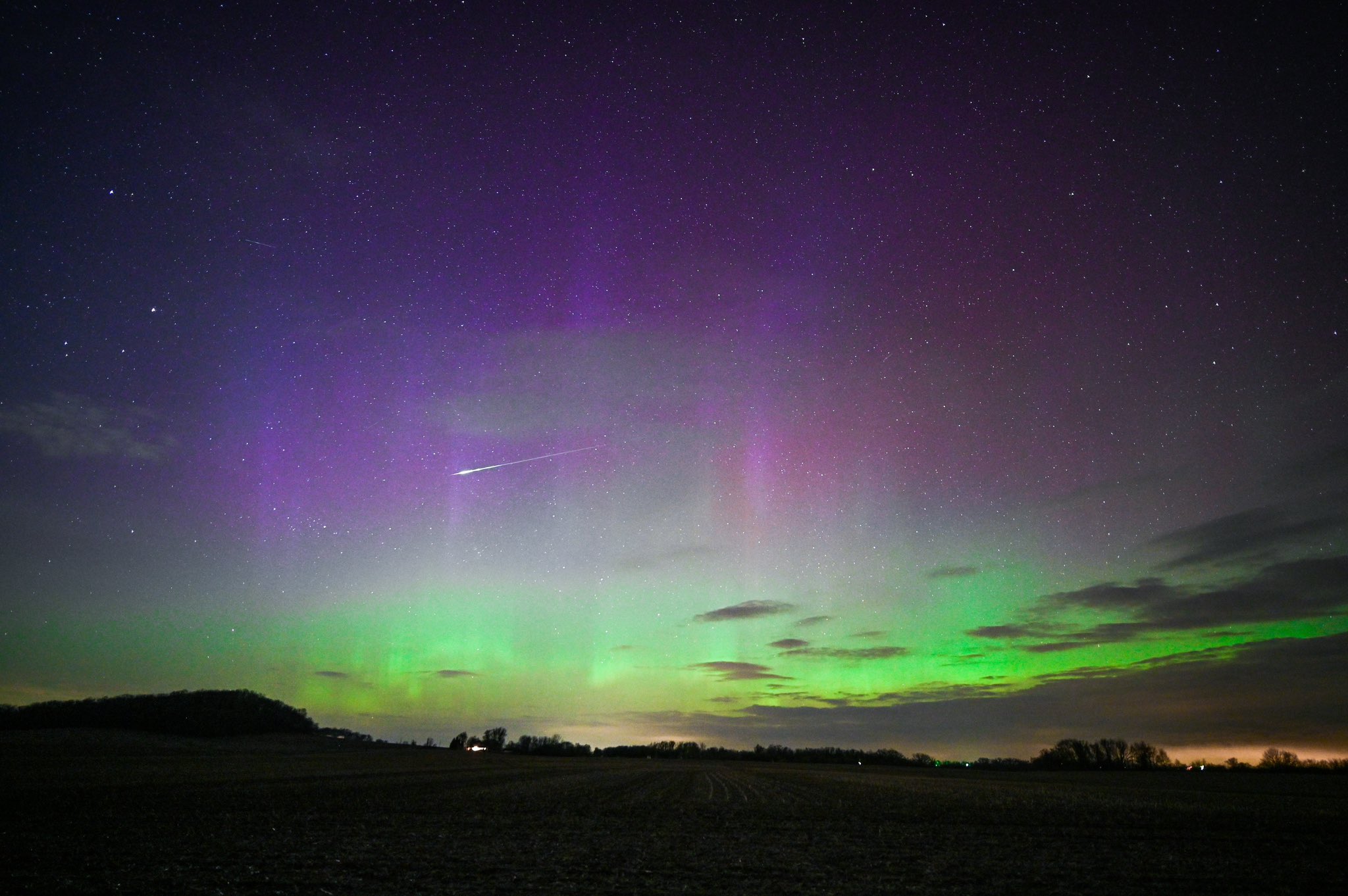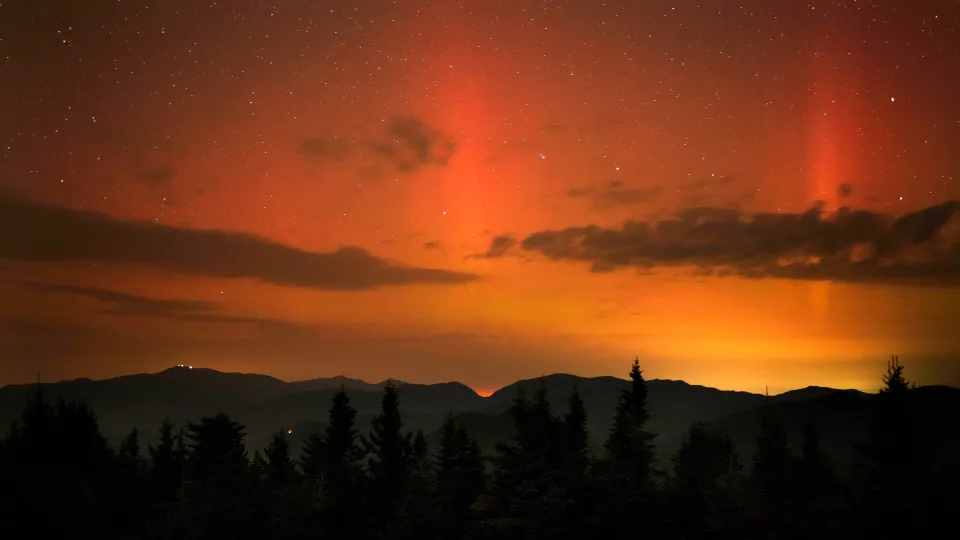There could be another opportunity to witness the Northern Lights on Friday night, following solar eruptions that triggered strong geomagnetic storms, allowing the aurora to be seen across multiple continental states.
According to the National Oceanic and Atmospheric Administration (NOAA), Friday night’s aurora will have a Kp index of four, indicating increased activity. This means the lights will appear brighter and “quite pleasing to look at” under optimal weather conditions.
NOAA increased its moderate G2 geomagnetic storm watch for Thursday to a stronger G3 watch or higher, resulting in Thursday night’s aurora having a Kp index of seven.
This heightened geomagnetic activity is due to a coronal mass ejection—a solar eruption—that occurred early Tuesday. The eruption created stunning light displays across Canada, Alaska, and several northern and Midwestern states, stretching from Washington to Maine.
Solar activity has been unusually high in recent months, as the sun’s 11-year solar cycle approaches its peak, expected between late 2024 and early 2026. As the cycle progresses, sunspots are predicted to increase, likely causing more geomagnetic storms over the next year.
Though it’s challenging to precisely predict where the Northern Lights will appear, NOAA suggests they will be most visible Friday night in Canada and Alaska.
In the continental U.S., states within the aurora’s view line include Washington, Idaho, Montana, Wyoming, North Dakota, South Dakota, Nebraska, Minnesota, Wisconsin, Michigan, Maine, and the northernmost parts of New York.

The Northern Lights are typically most active between 10 p.m. and 2 a.m. To get the best views, NOAA recommends heading as close to the poles as possible and avoiding areas with city lights or other sources of light pollution.
It’s also essential to monitor weather forecasts for clear skies and find a spot with a high vantage point, such as a hilltop.
Smartphones are sensitive enough to capture the aurora, even when it’s not visible to the naked eye.
“Visit Iceland,” a popular tourist website, advises using night mode on your smartphone to enhance camera exposure and capture the best images of the Northern Lights.
Solar Cycle 25, the current cycle of the sun that occurs roughly every 11 years, has been responsible for the recent geomagnetic storms that have made the Northern Lights more visible.
This cycle began in December 2019, and it’s expected to reach its peak between late 2024 and early 2026. Scientists predict this peak will involve around 115 sunspots, the primary source of geomagnetic storms.
While the cycle’s maximum activity hasn’t occurred yet, the sun’s behavior has been more intense than expected. This means there could be more frequent geomagnetic storms leading up to 2026, though predicting their exact timing remains difficult.

